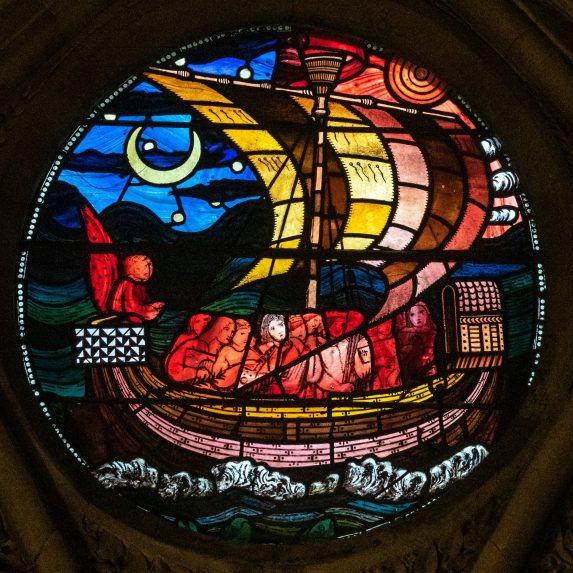Christ Church Cathedral, Oxford, Oxfordshire
Address
The Cathedral Church of Christ, (Christ Church, University of Oxford) St Aldate’s, Oxford OX1 1DPTheme
Overview
One of England’s smallest cathedrals but one with a fine and varied collection of stained glass, that is led by a rare surviving tribute to Thomas Becket from c.1340-50 in the Lucy Chapel. Stained glass of a similar age, but of a different style, can be seen in the Latin Chapel. There are two surviving windows from the 1630s by Abraham van Linge dedicated to Jonah and Bishop Robert King. Later work, which is principally from the 1870s, is dominated by the firms of Clayton & Bell, especially notable being their dramatic St Michael window in the north transept, 1875, and Morris & Co, to designs by Burne-Jones.
In 2023 the cathedral unveiled the first new window to be installed for 130 years. The window, which is in the north transept, depicts St Francis and was given in memory of Edward Hector Burn, tutor in law at Christ Church from 1954 to 1990. It was made by John Reyntiens.
Highlight
East window of the Latin ChapelArtist, maker and date
Designed by Edward Burne-Jones and made by James Powell & Sons, 1859Reason for highlighting
As a stained glass designer Edward Burne-Jones is best known for his collaboration with William Morris and the cathedral contains some fine examples. However, the east window of the Latin Chapel offers another aspect of his work. Made in 1859 by James Powell and Sons, it is a bold and colourful tribute to St Frideswide, patron of both the city and university of Oxford, designed when Burne-Jones was still in his mid-twenties and more obviously pre-Raphaelite than his later work. It is a dramatic contrast to his later work with Morris and is perhaps the finest of his early works.
Artist/maker notes
Edward Coley Burne-Jones (1833-1898) was born in Birmingham and studied at Exeter College, Oxford where he met William Morris, with whom his name as a stained glass artist would be forever be linked. The stature of this formidable artist and designer was recognised after his death when he became the first artist to be given a Memorial Service at Westminster Abbey.
Sources:
Burne-Jones Special Issue, The Journal of Stained Glass, Vol. XXXV, 2011
The Last Pre-Raphaelite: Edward Burne-Jones and the Victorian Imagination by Fiona McCarthy, Faber & Faber, 2011.
James Powell & Sons was formed when James Powell purchased Whitefriars Glass, an old established glass works, in 1834. His sons developed the business to be one of the major firms of the Victorian and Edwardian eras. Especially notable is their work with Charles Winston in the 1840s and 1850s to improve the quality of glass available, and the many fine designers with whom they worked. The company’s innovations extended beyond stained glass, with the company developing a formidable reputation in a number of fields, including tableware glass, where Whitefriars Glass remains highly collectable. The stained glass department finally closed in 1973, and the company in 1980.
Further reading:
James Powell & Sons, Whitefriars by Jacqueline Banerjee, PhD, Associate Editor, The Victorian Web



Comments by
Peter Hildebrand